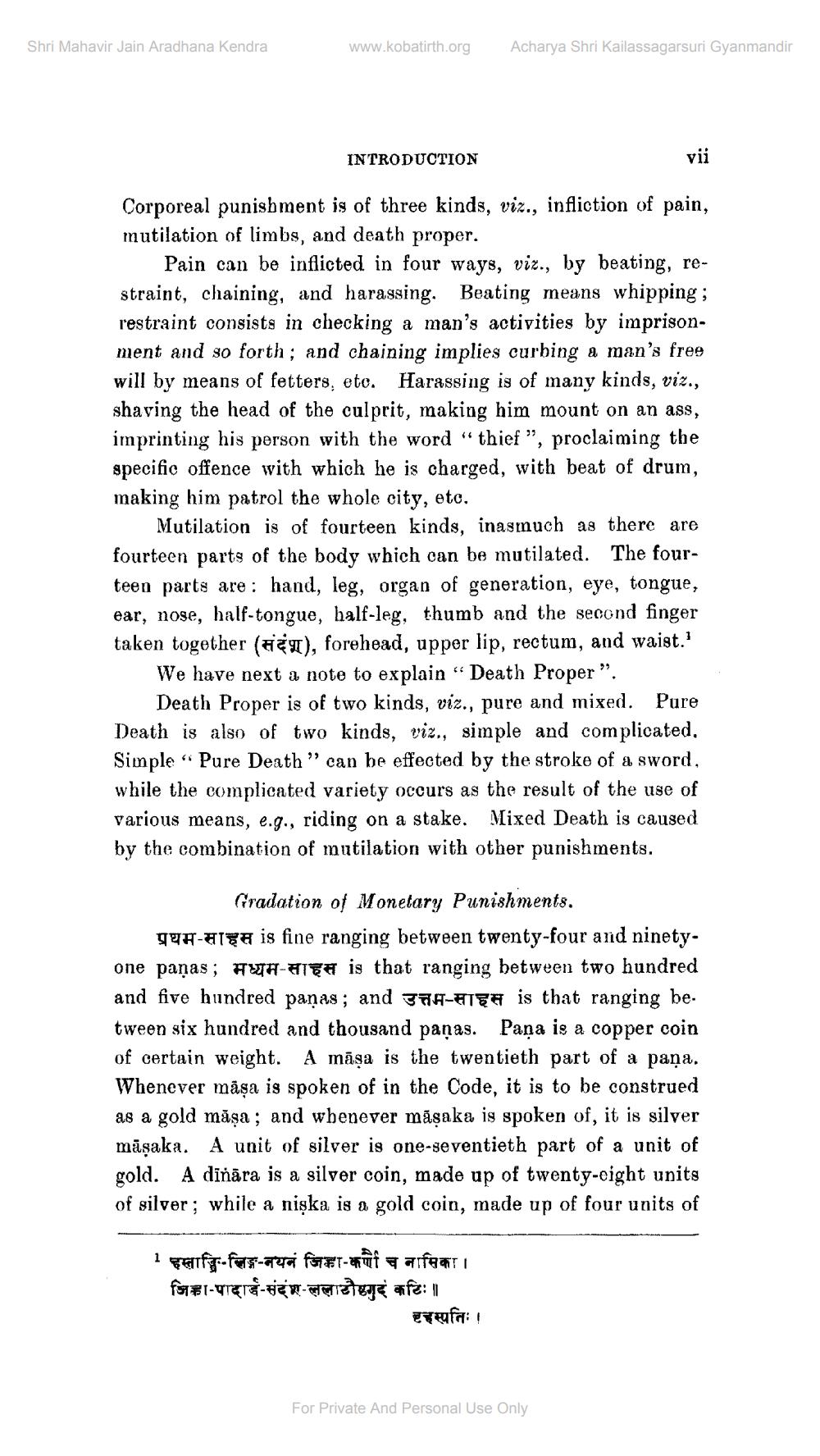________________
Shri Mahavir Jain Aradhana Kendra
www.kobatirth.org
Acharya Shri Kailassagarsuri Gyanmandir
INTRODUCTION
vii
Corporeal punishment is of three kinds, viz., infliction of pain, mutilation of limbs, and death proper.
Pain can be inflicted in four ways, viz., by beating, restraint, chaining, and harassing. Beating means whipping ; restraint consists in checking a man's activities by imprisonment and so forth; and chaining implies curbing a man's free will by means of fetters, eto. Harassing is of many kinds, viz., shaving the head of the culprit, making him mount on an ass, imprinting his person with the word "thief”, proclaiming the specific offence with which he is charged, with beat of drum, making him patrol the whole city, eto.
Mutilation is of fourteen kinds, inasmuch as there are fourteen parts of the body which can be mutilated. The fourteen parts are: hand, leg, organ of generation, eye, tongue, ear, nose, half-tongue, half-leg, thumb and the second finger taken together (HH), forehead, upper lip, rectum, and waist.
We have next a note to explain “Death Proper”.
Death Proper is of two kinds, viz., pure and mixed. Pure Death is also of two kinds, viz., simple and complicated, Simple - Pure Death" can be effected by the stroke of a sword, while the complicated variety occurs as the result of the use of various means, e.g., riding on a stake. Mixed Death is caused by the combination of mutilation with other punishments.
Gradation of Monetary Punishments. YA-HIPA is fine ranging between twenty-four and ninetyone panas ; मध्यम-साहस is that ranging between two hundred and five hundred paņas; and 3 H-FIEĦ is that ranging be. tween six hundred and thousand paņas. Paņa is a copper coin of certain weight. A māsa is the twentieth part of a paņa. Whenever māşa is spoken of in the Code, it is to be construed as a gold māşa; and whenever māsaka is spoken of, it is silver māşaka. A unit of silver is one-seventieth part of a unit of gold. A diñāra is a silver coin, made up of twenty-eight units of silver; while a nişka is a gold coin, made up of four units of
1 effe-ofera fuftepat anfaat fil-prere-Helwe g afe: ||
सहस्पतिः ।
For Private And Personal Use Only




